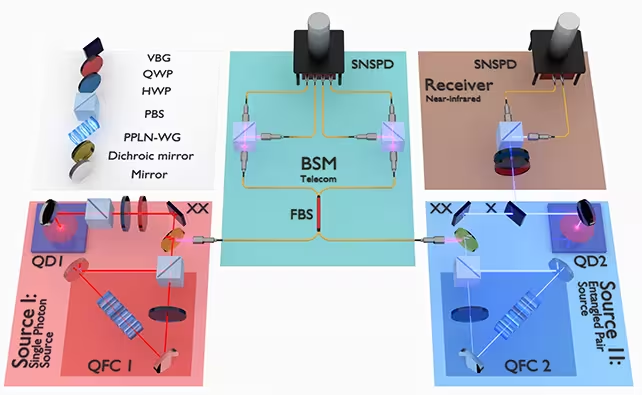3 Minutes
Researchers have demonstrated quantum teleportation between particles using quantum-dot emitters linked by a short optical fiber, marking a step toward secure quantum networks. The experiment shows that quantum-dot technology can transfer quantum states across an optical link with promising reliability, though longer distances and higher success rates remain goals for the next phase.
How the experiment worked in the lab
In the reported setup, scientists used quantum dots—nanoscale semiconductor structures that emit single photons on demand—as the sources of quantum states. Two quantum-dot systems were connected by an optical fiber roughly 10 meters (about 33 feet) long. Photons generated from each dot were manipulated and interfered so that the quantum state from one node could be recreated at the other without moving the physical particle itself, a process commonly referred to as quantum teleportation.
Key metrics and limitations
- Optical link length: ~10 meters (near 33 feet).
- Teleportation fidelity: a success rate slightly above 70 percent.
- Primary technical hurdles: increasing distance and improving reliability.

Why this matters for the future quantum internet
Quantum teleportation is not about Star Trek-style travel—it's a method to transfer quantum information securely. For a global quantum internet, a functioning quantum layer is essential: it preserves the integrity of entangled states and enables cryptographic protocols that classical networks cannot match. Demonstrations using quantum-dot emitters are particularly notable because these devices are compatible with semiconductor manufacturing and could scale more readily than some alternatives.
The research team emphasized that the results indicate growing maturity in quantum-dot based technology and represent an important building block for future quantum communication. The study was published in the journal Nature Communications, and the authors note that expanding the teleportation range and raising the success probability are immediate priorities.
Next steps and broader prospects
Future work will push the optical links to longer distances, refine photon indistinguishability, and integrate error-mitigation techniques. If these challenges are overcome, quantum-dot emitters connected by fiber could become a practical route toward metropolitan or regional quantum networks, enhancing secure communications and distributed quantum computing.
Source: sciencealert


Leave a Comment